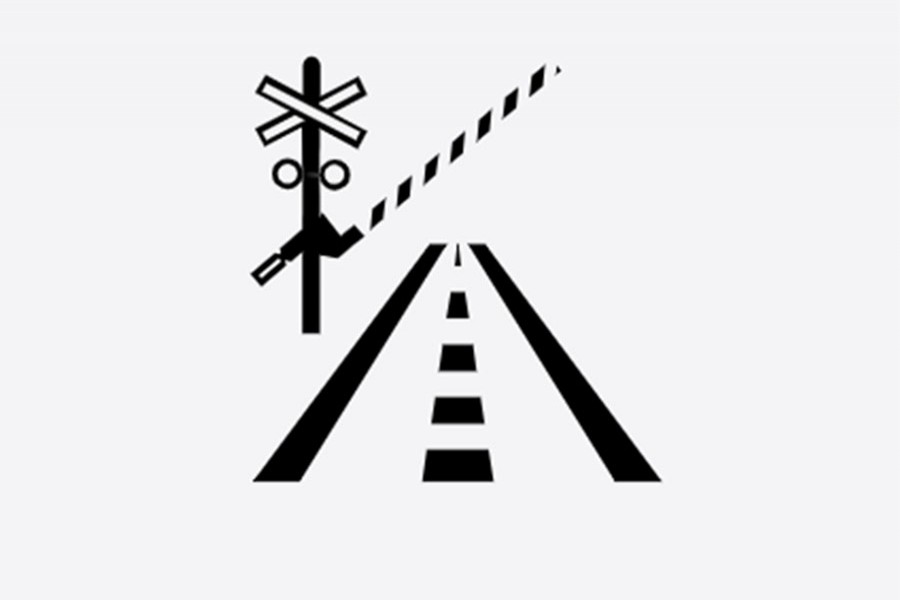Few countries except, perhaps, Bangladesh, find their level crossings turning into death traps. In few countries, are the level crossings left unmanned with a train about to speed or speeding past the area. The tendency of a section of motor drivers to cross the railway tracks when the level-crossing bars have already started coming down to obstruct the movement of motor vehicles is incorrigible. There is only one apt term to describe the devil-may-care act --- subconsciously suicidal. For all this drivers perhaps have less value for life than their mundane assignments.
Of late, a new menace has begun plaguing the roads on both sides of a level crossing. Thanks to traffic gridlocks, motor vehicles are compelled to remain stay put on the roads. When a train approaches the level-crossing point on a road, and the road happens to be in the midst of a gridlock, the possible consequences could be understood. A traffic jam doesn't normally take place all of a sudden. It takes some time for it to deteriorate into an unmanageable stage. Once it starts getting thick, with large and small automobiles caught in a vehicular melee, some vehicles are invariably found stuck on the rail tracks in-between the level crossing bars. On last December 26, a similar situation was confronted by a Narayanganj-bound train from Dhaka. Even after locating the ill-fated vehicles stuck on the railway track in the level-crossing space, the train driver found little he could do to stop his locomotive. Trains do not have brakes. But they can slow the speed down on being alerted by the level crossing staff to an adverse situation. The level crossing crew may have exercised this technique, and the driver slowed down the train. Yet it couldn't help ramming into a bus at the Narayanganj Railway Gate-1. It left two passengers dead and several others injured.
The train-bus collision in Narayanganj was not a unique one. These types of accidents have been occurring in the country at regular intervals. But this time the mishap has unfolded a new scourge --- its link to gridlocks. As a consequence, another government department tasked with keeping discipline on the country's roads and highways may have entered the scene. This development might involve newer problems. It underscores the need for a fresh set of remedial measures. Level-crossing accidents have been perennial to Bangladesh since long. Its frequency has increased after the 1980s. Nowadays hardly a year passes without a hundred minor and major accidents at these vulnerable crossings. In some areas, a signboard is placed asking passers-by and vehicles to cross the rail lines on their own responsibility.
Perhaps due to this, the number of level-crossing accidents is one of the highest in the world. The country has 2,668 level crossings in total. Of this number 1,468 are authorised, and 1,200 are unauthorised. Of the authorised crossings, only 564 are manned. No unauthorised level crossings have attendants. On the question of leaving room for level crossings, the Bangladesh Railway has long been at odds with several government agencies and entities. They include Local Government Engineering Department, Roads and Highways Department etc. The government high-ups are aware of these tiffs. They also know these conflicts eventually detract the Bangladesh Railway's (BR) operational capabilities. The BR has many limitations, apart from being plagued with irregularities. But it has to be allowed to function without facing annoying and avoidable hindrances.


